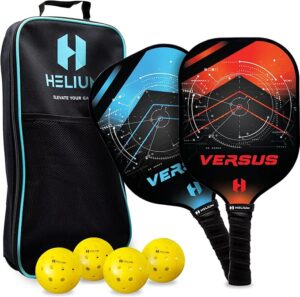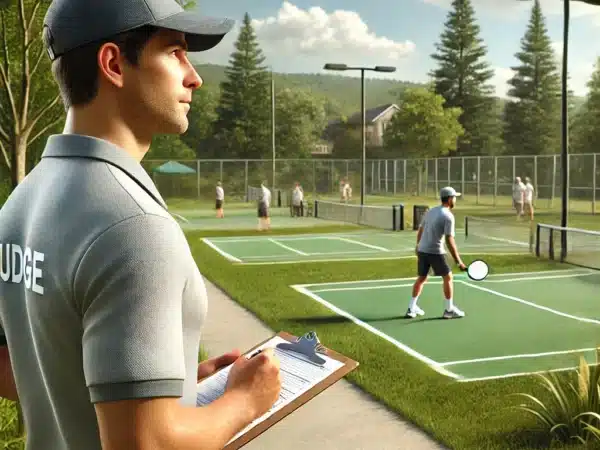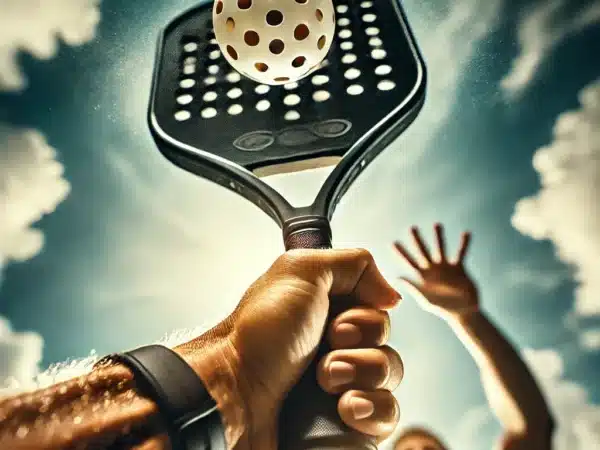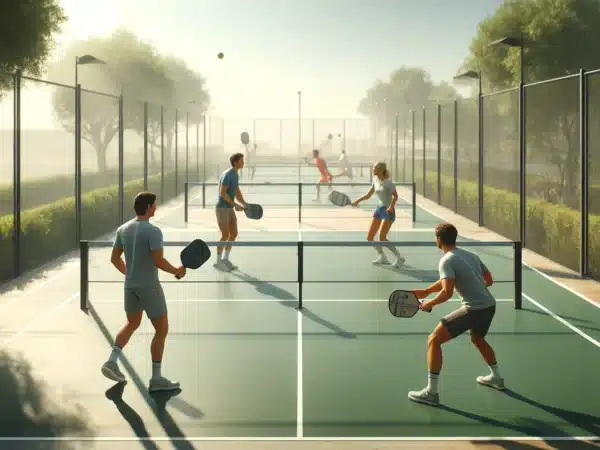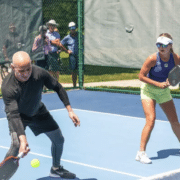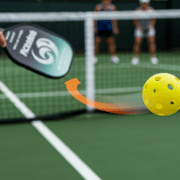Everything you need to know about the rules of pickleball
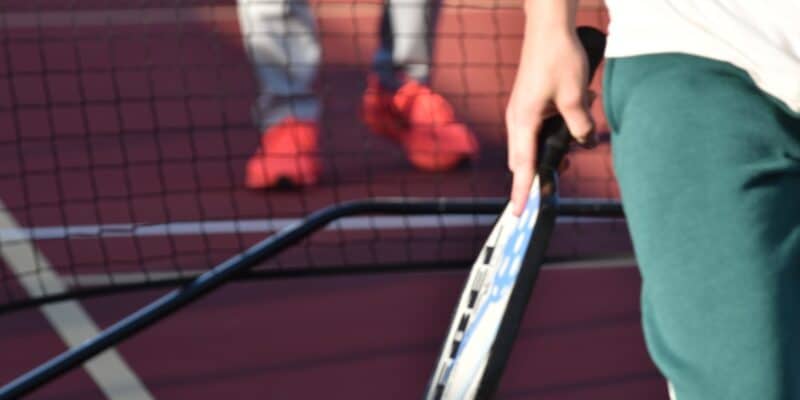
Pickleball is a dynamic and exciting sport that is gaining popularity around the world. Fun and accessible, it can be played by people of all ages and skill levels. However, in order to play correctly, it is important to understand the rules. In this article, we will look at the basic rules of pickleball so that you can go to the court and start playing with confidence. Those interested in details can download the full list of rules from the United States Pickleball Association (USAPA), published in 2023.
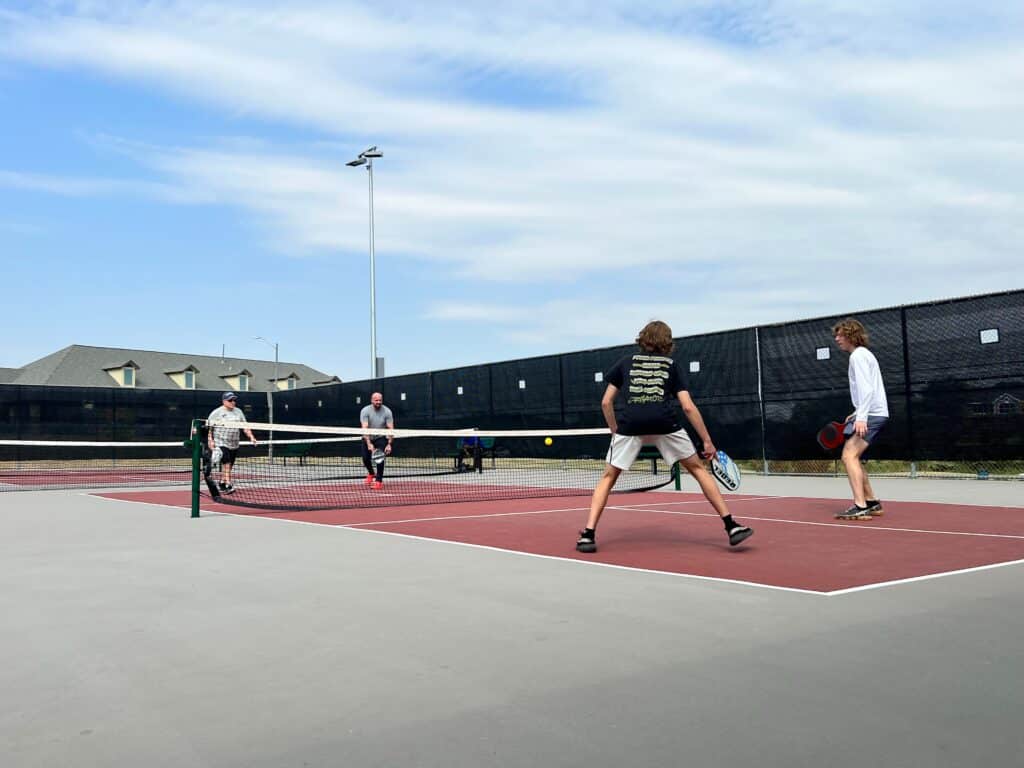
Photo by Lesli Whitecotton on Unsplash
Page contents
Basic rules
- Pickleball can be played both by two people and in pairs (four people – pair vs. pair)
- In both cases, the same sets of rules and court sizes are used
Court (playground)
A pickleball court is similar in size to a badminton court. The size of the court is 20 x 44 feet (approximately 6 x 13.4 meters). You can play both indoors and outdoors. The height of the net is 36 inches (almost 92 cm) in the center and 34 inches (86 cm) at the posts. On either side of the net is a non-playing area, also known as the “kitchen,” which is not intended for hitting the ball. Players are not permitted to enter the kitchen and may not take shots from there.

Taken from usapickleball.org
Pickleball equipment
Pickleball is played with a lightweight polymer ball with holes, which is hit with light rackets (paddles). Examples of pickleball sets from Helium or VINSGUIR brands. We also reviewed 5 great paddles.
The ball should be served in a bottom-up motion. Players can use a variety of strokes, including forehand, backhand, overhead, serves, candles (forehand), volleys, drop shots, and dinks. We have created a special series of articles about all these techniques, which you can read here.
The purpose of the game and scoring
The goal of the game is to throw the ball over the net into the opponent’s court so that they cannot deflect the ball. The winner is the one who is the first to score the required number of points.
- Only the serving team can score points.
- Games are usually played to 11 points, with a 2-point advantage.
- Tournament games can last up to 15 or 21 points, with a 2-point advantage.
- If the score of the serving team is even (0, 2, 4, 6, 8, 10), the player who first served in the game for that team will be on the right/even court when serving or receiving; if it is odd (1, 3, 5, 7, 9), the player will be on the left/odd court when serving or receiving.
Submission.
- When hitting the ball, the hand of the serving player must move in an arc from the bottom to the top.
- The contact of the racket with the ball should not be higher than the waist level.
- The racquet head must not exceed the highest part of the wrist when in contact.
- Drop filing is also allowed, in which none of the above rules apply.
- When the ball is kicked, the kicker’s feet may not touch the playing surface or be outside the imaginary extension of the touchline or centerline. At least one foot must be behind the baseline on the playing surface or on the ground behind the baseline.
- The serve is performed diagonally and must land within the diagonally opposite court.
- A player is allowed only one serve attempt.
- The submitting party is determined by any generally accepted fair method, such as a coin toss.
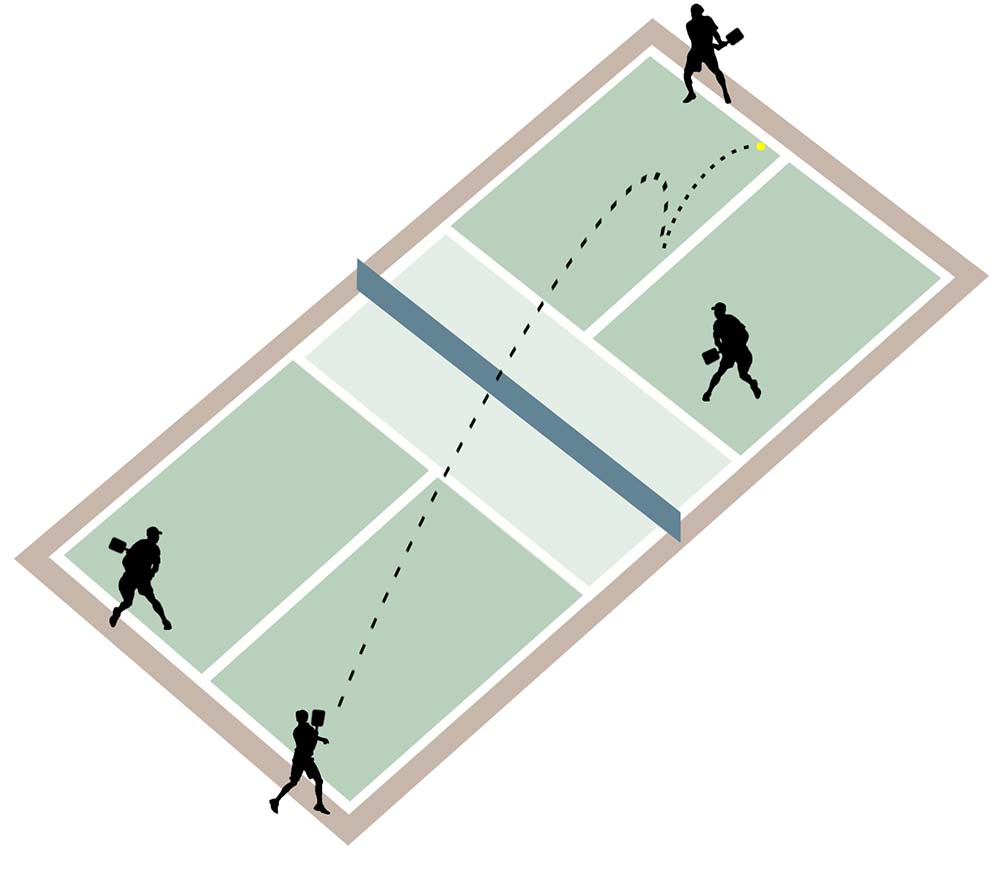
Taken from usapickleball.org
Sequence of filing
- Both players in the serving doubles team have the opportunity to serve and score points until they make an error* (except for the first serving sequence in each new game).
- The first pitch of each out is thrown from the right/even zone.
- If a point is scored, the serving player changes sides and starts the next serve from the left/odd zone.
- As the next points are awarded, the serving player continues to move back and forth between the zones until an error is made, at which point the serving player loses the service.
- When the first player loses a serve, his partner serves from his side of the court (except for the first serve of the game*).
- The second player continues to serve until his team makes a mistake and loses the serve to the opposing team.
- When the opponent receives the serve (from an out), the first serve is made from the right/doubles court and both players of that team have the opportunity to serve and score points until their team makes two errors.
- In singles play, the serving player serves from the right/even court if his or her score is even, and from the left/odd court if the score is odd.*At the beginning of each new game, only one partner on the serving team has the opportunity to serve until an error, after which the serve passes to the receiving team.
The rule of two bounces
- After the ball is served, the receiving team must let it bounce before it is hit. The serving team must then let the ball bounce before it is hit, which means two bounces.
- After the ball has bounced off the court once for each team, both teams can either hit the ball before it bounces (a fly shot) or play with the bounce off the ground.
- The two-bounce rule eliminates the advantage of serving and hitting on the fly and extends the ball’s play.
Line rules
- A ball that touches any part of any court line other than the kitchen area (non-playing area) line during a serve is considered to be in play.
- A serve that touches the kitchen line is a violation.
Non-gaming area
- The non-playing area is the area of the court within 7 feet (2.1 m) on either side of the net.
- The non-gaming area is usually called the “kitchen”.
- Kicking the ball is prohibited within the non-playing area. This rule does not allow players to kick from a position in the kitchen area.
- Violation – when a player enters the non-playing area or steps on its line while kicking the ball. And / or when the player’s movement (inertia of movement) causes him or something he is wearing or wearing (cap, glasses, etc.) to touch the offside zone or any of its lines.
- Violation – if, after a free kick, the player is carried by inertia into the non-playing area, or touches this area or line, even if the ball is declared offside before this happens.
- A player may legally stay in the non-playing area at any time, except when the ball is hit on the fly.
Violations (fouls)
- A foul is any action that stops the game due to a violation of the rules.
- An infringement by the receiving team scores a point for the serving team.
- An infringement by the serving team results in the player losing a serve or an out.
- The most common mistakes include throwing the ball out of bounds, hitting the ball in an off-limits area, or failing to hit the ball over the net.
Gameplay
The ball must be returned to the opponent’s court after each shot. Players are not allowed to hit the ball twice in a row. The ball may be hit with any part of the racket, but may not be carried, lifted or thrown. Points may be awarded to the serving team if the ball lands in the opponent’s court and the opponent is unable to retrieve it.
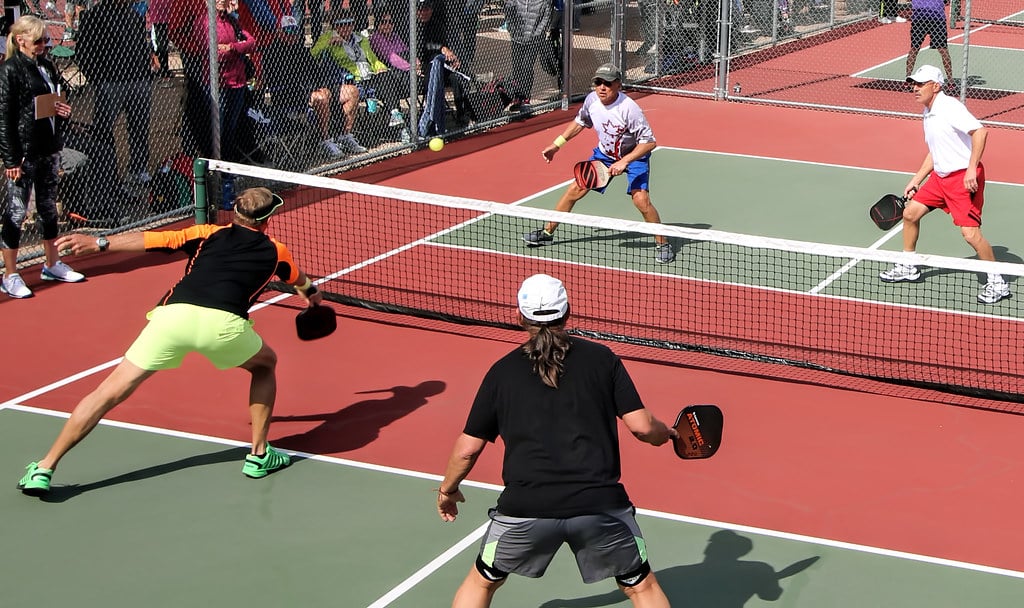
By Michael & Sherry Martin from Flickr
Results.
Pickleball is a great outdoor activity and sport for people of all ages. Once you understand the basic rules of the game, you can go out on the court and start playing with confidence. So grab a racket, your family or friends, and get ready for a fast and exciting game of pickleball! Whether you’re a beginner or an experienced player, pickleball is a great way to stay active, challenge yourself, and just have a lot of fun. While pickleball is only gaining momentum in Europe and Ukraine, I recommend that you be among the first to play this wonderful sport!

